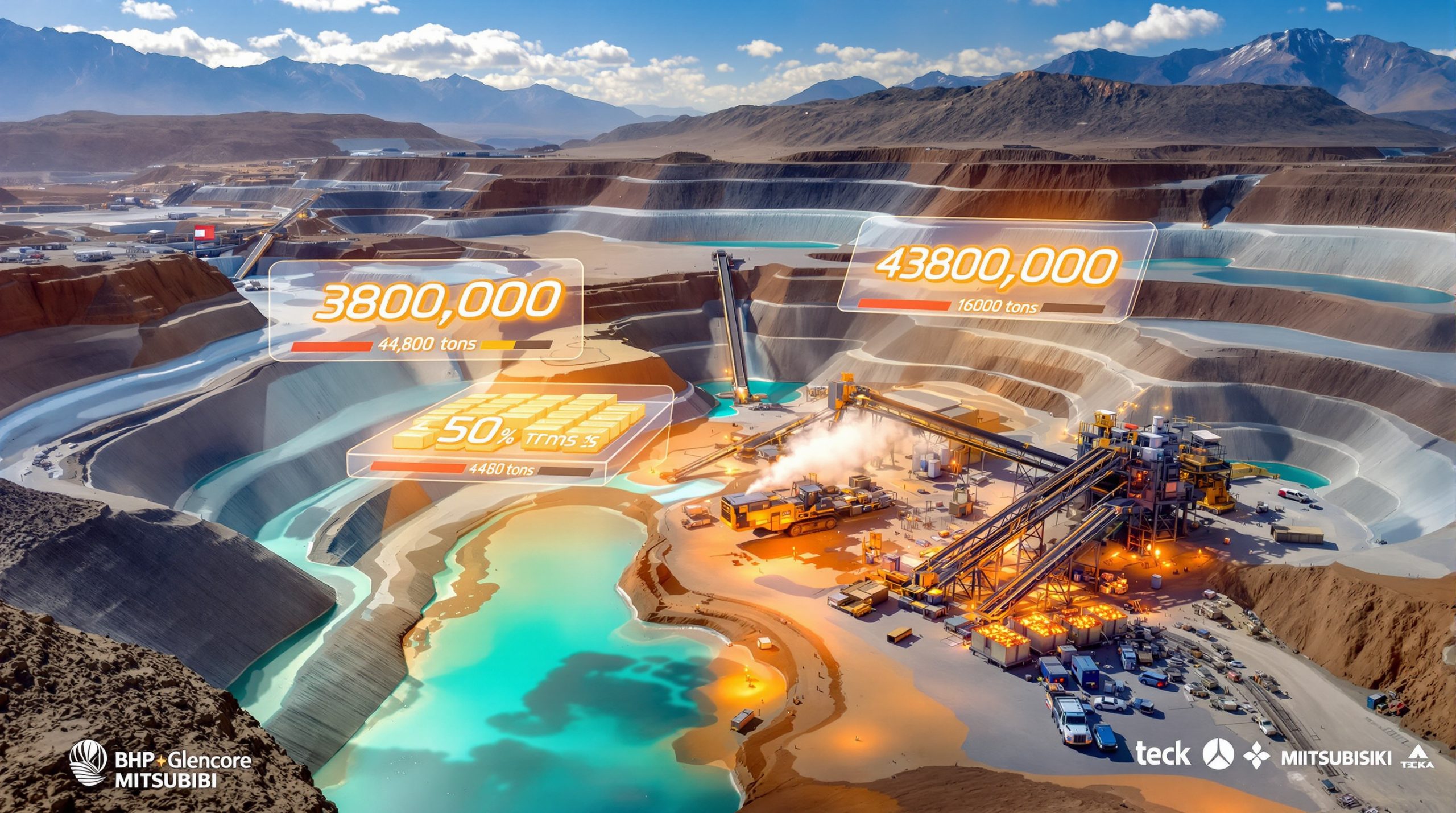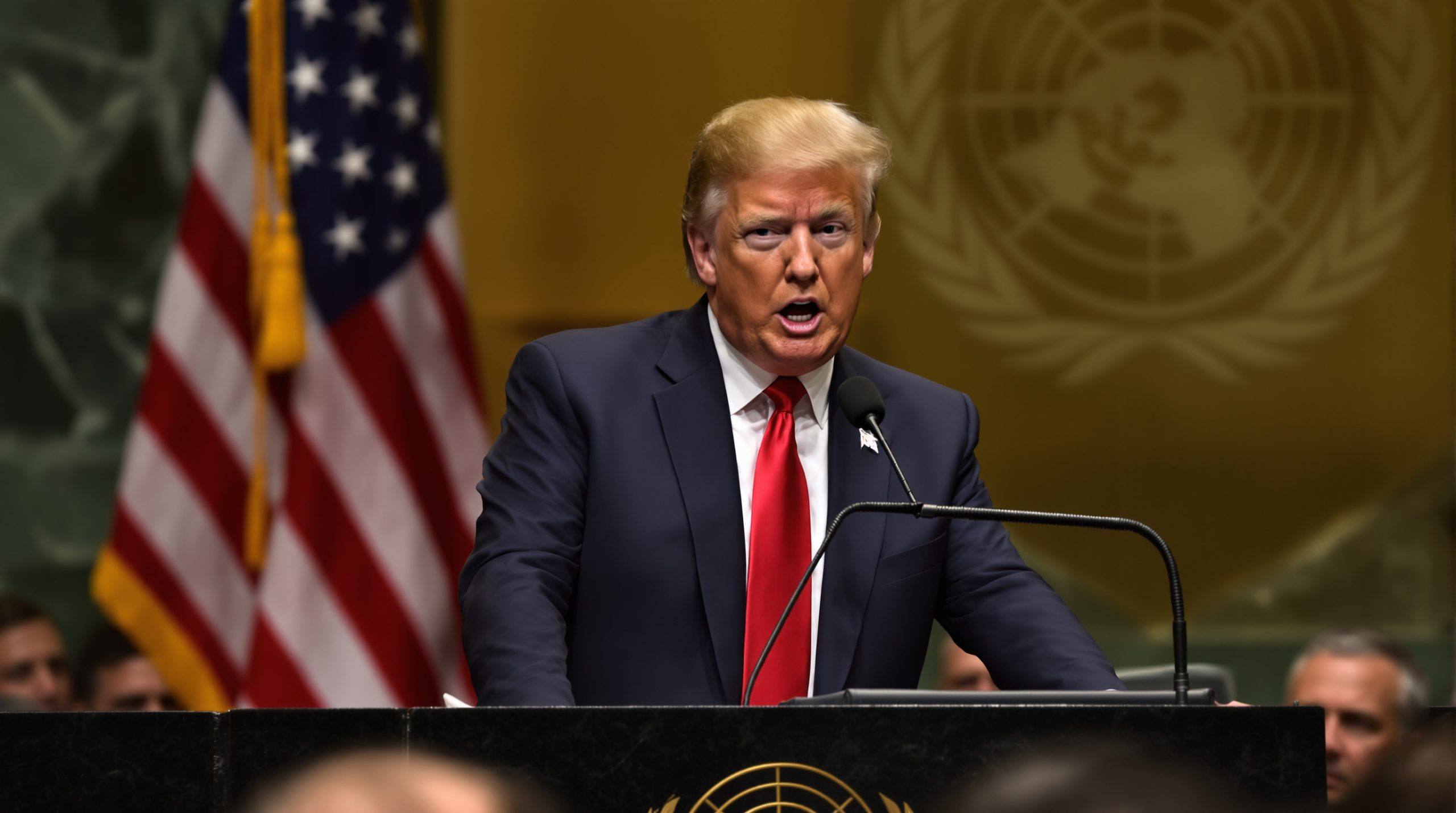American Lithium's Falchani Project: Investment Boost Signals New Phase for Peru's Lithium Future
American Lithium Corp has significantly increased its investment in the Falchani lithium project in Peru, marking a pivotal development in the country's emerging battery metals sector. This investment boost follows the successful resolution of legal hurdles that had temporarily stalled the project's advancement, setting the stage for Peru to potentially become a significant player in the global lithium supply chain.
How Has American Lithium Increased Its Investment in Peru?
American Lithium Corp has raised investment in its Falchani lithium project by 22%, bringing the total to $847 million. This substantial capital increase follows the successful resolution of legal disputes over concession ownership that had temporarily hindered development activities. The updated investment plan includes construction of an on-site refinery in Peru's southeastern Puno region, according to Ulises Solis, general manager of Macusani Yellowcake, American Lithium's Peruvian subsidiary.
The project is currently in the process of restarting operations after navigating through complex legal challenges. This renewed momentum signals American Lithium's long-term commitment to developing this strategic asset despite recent lithium market downturn.
Key Investment Changes and Project Scope
The revised $847 million investment represents a substantial increase from previous allocations, reflecting expanded project scope and enhanced processing capabilities. The investment strategy prioritizes vertical integration through on-site refining capabilities, which could potentially reduce operational costs while increasing the project's overall value proposition.
Key components of the investment plan include:
- Construction of a state-of-the-art refinery in the Puno region
- Enhanced processing infrastructure to optimize lithium recovery rates
- Expanded production capacity planning to meet growing global demand
- Advanced environmental safeguards to minimize ecological impact
- Community development initiatives to ensure sustainable local benefits
Industry analysts note that the decision to build an on-site battery-grade lithium refinery is particularly significant, as it demonstrates American Lithium's confidence in both the project's resource quality and long-term operational viability. This vertically integrated approach differs from many lithium projects that separate mining and refining operations geographically.
What Legal Challenges Did American Lithium Overcome?
Court Confirmation of Concession Rights
The project's advancement follows a significant legal victory for American Lithium, with Peru's judiciary confirming the company's ownership of mining concessions in the disputed area. This legal resolution removes a major obstacle that had impeded progress at the Falchani site.
The dispute had centered around the validity of certain mining concessions, creating uncertainty that temporarily paused development activities. The legal clarification provides American Lithium with the certainty needed to proceed with its ambitious development plans.
Regulatory Environment in Peru
The restart signals improved regulatory conditions for lithium development in Peru, which has been working to establish clearer frameworks for critical mineral projects. Peru's mining ministry has been actively developing policies that balance resource development with environmental protection and community interests.
The legal resolution provides several advantages for the project:
- Confirmed title to mining concessions, establishing clear ownership rights
- Regulatory clarity for operational planning and permitting processes
- Improved investor confidence in the project's legal standing
- Framework for continued development in accordance with Peruvian regulations
Peru's government has recognized the strategic importance of developing domestic lithium resources as global demand for battery metals continues to grow. The country is working to position itself as an emerging player in the lithium market, diversifying beyond its traditional focus on copper and precious metals.
What Makes the Falchani Lithium Project Significant?
Strategic Location and Resource Potential
The Falchani project represents one of South America's most promising lithium developments outside the established "Lithium Triangle" of Chile, Argentina, and Bolivia. Located in Peru's mineral-rich Puno region, the project offers several strategic advantages:
- Substantial lithium resource potential with favorable mineralization characteristics
- Strategic positioning in an emerging lithium jurisdiction outside traditional producing regions
- Potential to diversify global lithium supply chains beyond concentrated sources
- Proximity to Pacific shipping routes for efficient access to export markets
The project's lithium resources are found in volcanic deposits rather than the brine resources typical of the Lithium Triangle. This geological differentiation could provide operational advantages in terms of extraction methods and environmental considerations.
Economic Impact for Peru
The increased investment underscores the project's growing economic significance for Peru:
- Job creation in the Puno region, including both direct mining positions and indirect support services
- Development of specialized mining skills and technical expertise in the local workforce
- Potential tax revenue increases to benefit national and regional governments
- Positioning Peru as an emerging battery metals producer in the global market
If successfully developed, Falchani could establish Peru as a significant lithium producer, adding a valuable new dimension to the country's mining sector, which has historically focused on copper, gold, and silver. The project aligns with Peru's strategic interest in participating in the energy transition supply chain.
How Does This Investment Affect Project Timeline and Production?
Development Schedule
With legal hurdles cleared and increased investment secured, American Lithium is positioned to accelerate the Falchani project's development timeline:
- Engineering and design work resumption with enhanced scope and detail
- Construction planning for the new refinery with updated technological specifications
- Permitting processes advancement through Peruvian regulatory channels
- Community consultation continuation to ensure social license to operate
The additional capital allocation suggests confidence in an accelerated timeline, though specific production target dates have not been officially announced. Industry experts suggest that lithium projects typically require 3-5 years from investment decision to production, though this timeline can vary significantly based on project complexity and permitting processes.
Production Targets and Capacity
The expanded investment signals American Lithium's confidence in Falchani's production potential:
- Initial production capacity targets will likely align with global market demand projections
- A phased expansion approach may be implemented to manage capital efficiency
- Refined lithium carbonate quality specifications will aim to meet battery-grade requirements
- Market delivery timelines will be coordinated with projected electric vehicle production growth
The on-site refinery development indicates a strategy focused on producing higher-value battery-grade lithium products rather than lower-value concentrates. This approach could potentially maximize the project's revenue generation while reducing transportation costs and carbon footprint.
What Technology and Processing Innovations Are Planned?
Refinery Integration and Processing Advancements
The decision to build an on-site refinery represents a significant technological commitment:
- Vertically integrated production model connecting extraction and processing operations
- Reduced transportation costs and carbon footprint through eliminated intermediate shipping
- Enhanced quality control capabilities through integrated production management
- Value-added processing within Peru rather than exporting raw materials
This approach differs from many lithium projects that separate mining and refining operations. The integrated model could provide operational efficiencies while retaining more economic value within Peru.
Environmental Considerations
The updated investment plan likely incorporates enhanced environmental technologies:
- Water conservation systems to minimize consumption in processing operations
- Renewable energy integration possibilities to reduce carbon emissions
- Waste management innovations to minimize environmental impact
- Reduced environmental footprint compared to traditional lithium extraction methods
Modern lithium projects increasingly incorporate sustainability measures in response to both regulatory requirements and market expectations for responsibly sourced materials. American Lithium's approach at Falchani appears to align with this industry trend toward more environmentally conscious mining practices.
How Does This Project Compare to Other Global Lithium Developments?
Competitive Positioning
The Falchani project's expanded scope positions it among significant global lithium developments:
| Project Aspect | Falchani (Peru) | Typical South American Brine Projects | Hard Rock Projects (Australia) |
|---|---|---|---|
| Investment Scale | $847 million | $500-900 million | $400-700 million |
| Processing Method | Hard rock/clay processing | Evaporation ponds | Spodumene concentration |
| Time to Market | Medium | Long | Short to medium |
| Environmental Impact | Moderate | High water usage | Higher energy requirements |
| Product Purity | High-grade potential | Variable | Consistent |
The investment level places Falchani in the upper range of lithium project capital expenditures, suggesting a substantial scale operation with significant production potential. The project's development approach balances time-to-market considerations with product quality objectives.
Market Differentiation
Falchani offers several distinguishing characteristics compared to other lithium projects:
- Unique geological formation and mineralization type compared to brine or traditional hard rock
- Integrated refining capabilities reducing dependency on third-party processors
- Strategic geographic position outside the concentrated Lithium Triangle production area
- Potential diversification of supply chain risk for lithium consumers seeking source variety
These differentiating factors could potentially position Falchani favorably in a competitive market where battery manufacturers and electric vehicle producers increasingly seek diversity in their supply chains.
What Market Factors Are Driving This Investment Increase?
Global Lithium Demand Trends
American Lithium's increased investment reflects confidence in long-term lithium market fundamentals:
- Accelerating electric vehicle adoption rates across major automotive markets
- Energy storage system deployment growth for grid stabilization and renewable integration
- Industrial applications expansion beyond traditional uses
- Supply constraints in traditional producing regions amid rising demand projections
Despite short-term lithium price volatility, long-term demand projections remain robust. Industry forecasts suggest global lithium demand could triple by 2030, driven primarily by electric vehicle battery production growth.
Price Volatility Considerations
Despite recent lithium price fluctuations, the company's investment signals confidence in long-term market stability:
- Strategic positioning for market recovery beyond current price corrections
- Focus on cost-effective production methods to ensure profitability across price cycles
- Preparation for anticipated demand growth from automotive and energy storage sectors
- Risk mitigation through processing innovations that can adapt to changing market conditions
Lithium markets have experienced significant price volatility in recent years, with prices reaching historic highs in 2022 before correcting substantially. American Lithium's continued investment suggests a long-term perspective that looks beyond these short-term fluctuations to the structural growth in lithium demand.
What Challenges Remain for the Falchani Project?
Operational Considerations
Despite the positive developments, several challenges remain:
- Infrastructure development in remote regions of southeastern Peru
- Technical optimization of processing methods for the specific mineralization type
- Water management in an environmentally and socially sensitive area
- Skilled workforce development in a region with limited mining experience
Addressing these challenges will require careful planning and substantial investment beyond the core mining and processing operations. The expanded investment allocation likely includes provisions for these supporting requirements.
Market and Financial Factors
External factors that may impact project success include:
- Lithium price volatility affecting revenue projections and return on investment
- Global economic conditions influencing capital availability and project financing
- Competition from established producers with lower operating costs
- Capital market access for future funding needs if additional investment is required
The project's economic viability will depend on effectively navigating these external factors while maintaining operational efficiency. American Lithium's increased investment suggests confidence in the project's ability to withstand these challenges.
How Does This Project Impact Peru's Mining Sector?
Diversification Beyond Traditional Metals
The Falchani project represents Peru's diversification beyond its traditional focus on copper, gold, and silver:
- Entry into the battery metals supply chain, a growing sector with strategic importance
- Technology mineral development aligning with global energy transition trends
- Higher-value processed exports rather than raw material shipments
- Reduced dependence on traditional metal exports in a diversified mining portfolio
This diversification could strengthen Peru's mining sector against commodity price cycles by reducing concentration risk in specific metals. The battery metals sector also offers growth potential that aligns with global decarbonization trends.
Regulatory Precedents
The project's advancement establishes important precedents for Peru's critical minerals sector:
- Permitting pathways for lithium projects that future developments can follow
- Foreign investment frameworks demonstrating Peru's openness to battery metal projects
- Community engagement models balancing local interests with national development goals
- Environmental compliance standards specific to lithium extraction and processing
These precedents could potentially streamline future critical mineral developments in Peru, creating a more predictable regulatory environment that attracts additional investment in the sector.
What Are the Implications for Global Lithium Supply Chains?
Supply Diversification
The Falchani project contributes to global lithium supply diversification:
- Reduced concentration risk from dominant producers in Australia, Chile, and China
- New source outside established lithium regions adding geographic diversity
- Alternative to Australian hard rock and South American brines in processing methods
- Supply chain resilience enhancement through multiple source availability
This diversification addresses growing concerns about lithium supply concentration, particularly as automotive manufacturers seek to secure reliable battery material supplies for expanding electric vehicle production.
Market Balance Effects
When operational, Falchani could influence global lithium market dynamics:
- Additional supply to meet growing demand from electric vehicle and energy storage sectors
- Potential price stabilization effects through increased production capacity
- Competition with established producers potentially driving efficiency improvements
- Quality differentiation in lithium products meeting specific battery chemistry requirements
The project's ultimate impact on global markets will depend on its production volume, product specifications, and timing relative to demand growth. As a significant new entrant, Falchani could play an important role in meeting projected lithium demand increases.
What Community and Sustainability Measures Are Included?
Local Development Initiatives
The expanded investment likely includes enhanced community development components:
- Local employment priorities creating economic opportunities in the Puno region
- Skills development programs preparing residents for mining and processing jobs
- Infrastructure improvements benefiting communities beyond the project itself
- Community services support in health, education, and other priority areas
These initiatives reflect the mining industry's evolving approach to social license, recognizing that community support is essential for successful project development and operation.
Sustainability Commitments
Modern lithium projects increasingly incorporate sustainability measures:
- Water conservation technologies minimizing consumption in water-sensitive regions
- Renewable energy integration reducing carbon emissions from operations
- Biodiversity protection plans preserving local ecosystems
- Responsible land management practices minimizing disturbance footprints
These sustainability commitments respond to growing market expectations for responsibly sourced battery materials. Electric vehicle manufacturers and battery producers increasingly evaluate their supply chains against environmental and social criteria, making sustainability practices a competitive advantage for lithium producers.
What Does This Mean for Peru's Lithium Future?
The 22% investment increase in American Lithium's Falchani project signals a new chapter for Peru's emergence as a lithium producer. With legal hurdles cleared and expanded plans for an on-site refinery, the project is positioned to advance toward production, potentially establishing Peru as a significant player in the global battery metals supply chain.
The increased investment demonstrates confidence in both the project's technical viability and Peru's improving regulatory environment for critical minerals development. As global demand for lithium continues to grow with the expansion of electric vehicle markets and energy storage systems, Falchani represents an important diversification of supply outside traditional producing regions.
For Peru, the project offers an opportunity to participate in the energy transition economy while diversifying its mining sector beyond traditional metals. The construction of an on-site refinery particularly signals a value-added approach that could maximize economic benefits within the country rather than exporting raw materials for processing elsewhere.
The project's advancement also establishes important precedents for future lithium developments in Peru, potentially creating a more predictable pathway for additional investments in the sector. If successfully developed, Falchani could position Peru as an emerging force in the battery metals market, complementing its established position in traditional mining sectors.
FAQ: American Lithium's Falchani Project Investment
What is the new total investment amount for the Falchani project?
The total investment has increased by 22% to $847 million from previous allocation figures.
Where exactly is the Falchani project located?
The project is located in the Puno region in southeastern Peru, an area with significant mineral resources.
What major addition is included in the updated investment plan?
The plan now includes construction of an on-site refinery at the project location, enabling integrated processing operations.
What legal issue was recently resolved for the project?
A legal dispute over mining concession ownership has been resolved, confirming American Lithium's rights to develop the project.
Who is managing the project in Peru?
Macusani Yellowcake, a subsidiary of Canada's American Lithium Corp, is managing the project under General Manager Ulises Solis.
How does this project compare to lithium operations in the "Lithium Triangle"?
Unlike the brine operations in Chile, Argentina, and Bolivia, Falchani represents a hard rock/clay-based lithium resource with different processing requirements and environmental considerations. For comparison, examining Argentina lithium insights provides context on the differences between these resource types.
Want to Invest in the Next Major Mineral Discovery?
Discovery Alert's proprietary Discovery IQ model instantly identifies significant ASX mineral discoveries, turning complex data into actionable investment insights. Explore why major discoveries like those from American Lithium can lead to substantial returns by visiting Discovery Alert's dedicated discoveries page and begin your 30-day free trial today.




